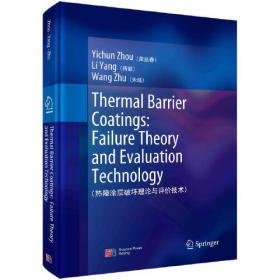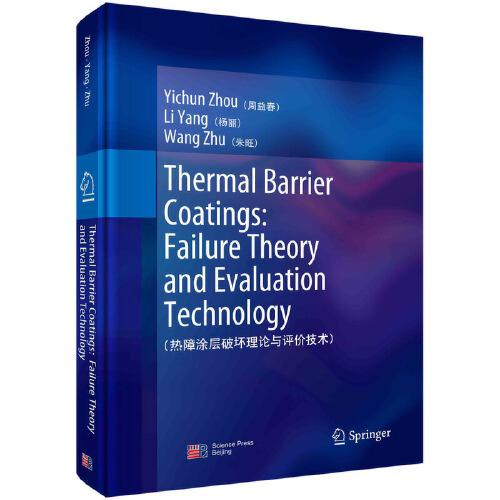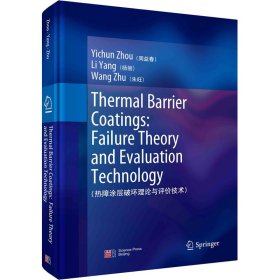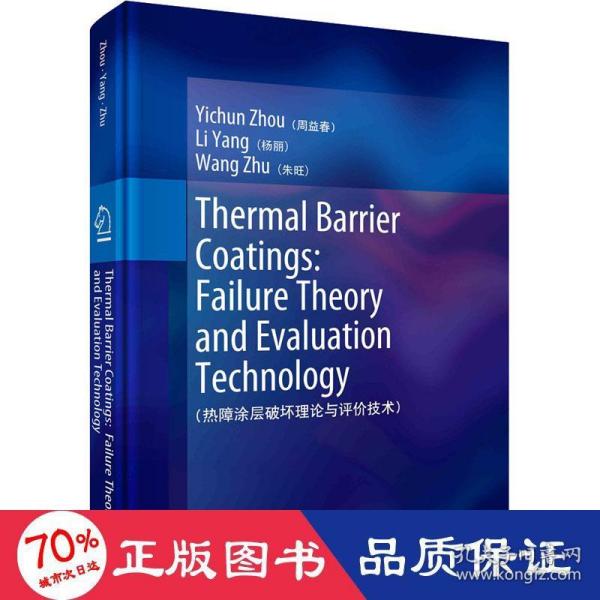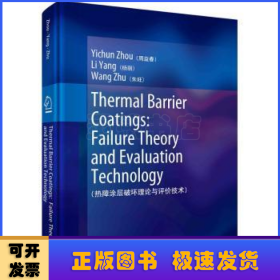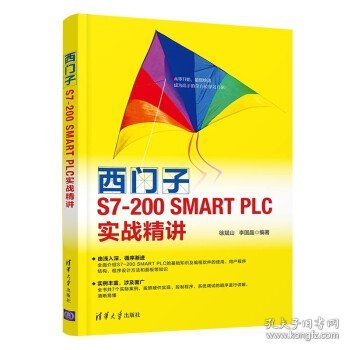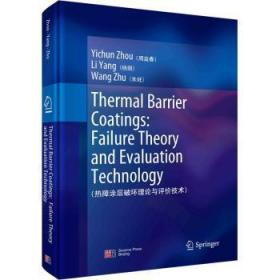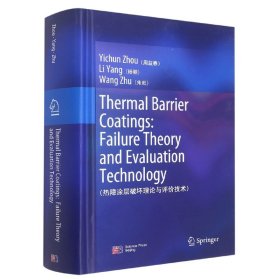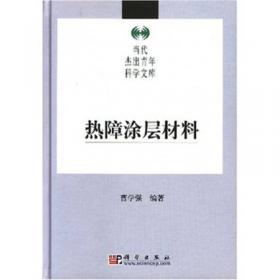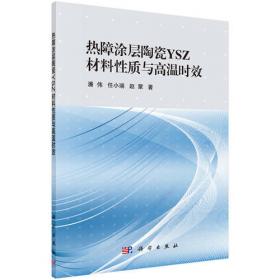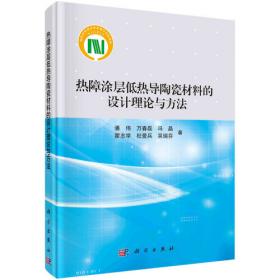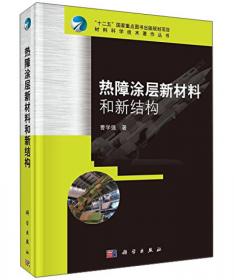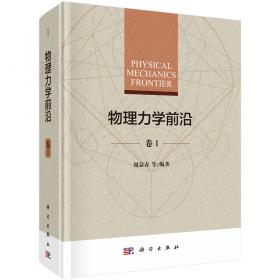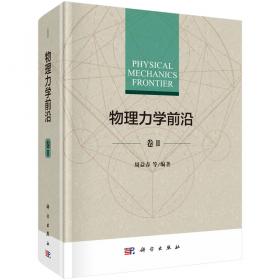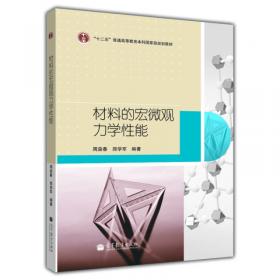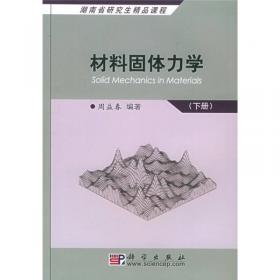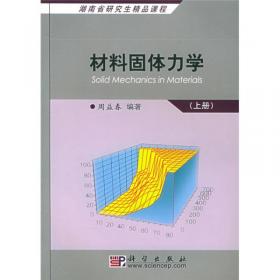热障涂层破坏理论与评价技术(英文版)
出版时间:
2022-10
版次:
1
ISBN:
9787030733290
定价:
499.00
装帧:
精装
开本:
16开
纸张:
胶版纸
页数:
934页
字数:
350.000千字
-
整书内容分为三篇,共15章。第一篇即第1~6章,介绍热障涂层的破坏理论,其中第1章和第2章分别介绍热力化耦合的理论框架和非线性有限元理论,第3~6章分别介绍热障涂层界面氧化、CMAS腐蚀、冲蚀热力化耦合的破坏理论与机制。第二篇即第7~12章,介绍热障涂层性能与损伤的表征技术,第7~9章凝练热障涂层基本力学性能、断裂韧性、残余应力的各种先进表征方法,第10~12章介绍裂纹、界面氧化、应力应变场等关键损伤参量的无损实时表征方法。第三篇即第13~15章,介绍热障涂层性能评价技术,包括隔热与强度综合效果的评价、可靠性与服役寿命的评价以及模拟考核方法与试验平台方面的进展。 目录
Contents
1 Introduction 1
1.1 TBCs and the Corresponding Preparation Methods 2
1.1.1 TBC Materialsand Structures 2
1.1.2 TBC Preparation Methods 4
1.2 TBC Spallation Failure and Its MainIn.uencingFactors 9
1.2.1 Service Conditions for TBCs 9
1.2.2 TBC Spallation Failure and Its MainIn.uencing Factors 10
1.3 Solid Mechanics Requirements and Challenges Generated by TBC Failure 14
1.3.1 Solid Mechanics Requirements Generated by TBC Failure 14
1.3.2 Solid Mechanics Challenges Presented by TBC Failure 17
1.4 Content Overview 21
References 23
2 Basic Theoretical Frameworks for Thermo–Mechano-Chemical Coupling in TBCs 27
2.1 Continuum Mechanics 27
2.2 Theoretical Frameworkfor Thermo–Mechano-Chemical Coupling Basedon Small Deformation 30
2.2.1 Strain and Stress Measures BasedonSmall Deformation[5,6] 30
2.2.2 Stress–Strain Constitutive Relations Based onSmall Deformation[5,6] 47
2.2.3 Constitutive Theoryfor Thermomechanical CouplingBased on Small Deformation[11] 52
2.2.4 Constitutive Theory forThermo–Mechano-Chemical Coupling Basedon Small Deformation[16] 61
2.3 Theoretical Frameworkfor Thermo–Mechano-Chemical Coupling BasedonLarge Deformation 68
2.3.1 Kinematic Description[9] 68
2.3.2 Stressand StrainMeasures 71
2.3.3 Mass Conservation and Force Equilibrium Equations 74
2.3.4 Constitutive Theoryfor Thermomechanical Coupling Basedon Large Deformation[18,25,26] 80
2.3.5 Constitutive Theory for Thermo–Mechano-Chemical Coupling BasedonLarge Deformation 85
2.4 Summary and Out look 93
References 97
3 Nonlinear FEA of TBCs on Turbine Blades 99
3.1 FEAPrinciples 100
3.1.1 Functional Variational Principle 100
3.1.2 WeakFormof theEulerianFormulation 105
3.1.3 FEDiscretizati on of the Eulerian Formulation 108
3.1.4 WeakFormof theLagrangian Formulation 111
3.1.5 FE Discretizati on of the Lagrangian Formulation 113
3.1.6 WeakFormof the Arbitrary Lagrangian–Eulerian Formulation 116
3.1.7 Initial and Boundary Conditions 121
3.2 FE Modeling of TBCs on Turbine Blades 122
3.2.1 Geometric Characteristicsof Turbine Blades 122
3.2.2 Parametric Modelingof Turbine Blades 124
3.3 Mesh Generationfor Turbine Blades 140
3.3.1 Generationof Unstructured Meshes 141
3.3.2 Structured Meshes for Turbine Blades 145
3.4 Image-Based FE Modeling 150
3.4.1 Image-BasedFEM 151
3.4.2 2D TGO Interface Modeling 153
3.4.3 Porous Ceramic Layer Modeling 156
3.4.4 D3TGO Interface Modeling Method 157
3.5 Summaryand Outlook 158
References 159
4 Geometric Nonlinearity Theory for the Interfacial Oxidation of TBCs 163
4.1 Interfacial Oxidation Phenomenon andFailure 164
4.1.1 Characteristics and Patterns of Interfacial Oxidation 164
4.1.2 StressField Inducedby Interfacial Oxidation 167
4.1.3 Coating SpallationInducedby Interfacial Oxidation 170
4.2 TGO Growth Model Basedon Diffusion Reaction 172
4.2.1 Governing Equations 172
4.2.2 FESimulation 178
4.3 Thermo–Chemo–Mechanical CouplingAnalytical Model forInterfacial OxidationofTBCs 188
4.3.1 Thermo–Chemo–Mechanical Coupling Analytical Growth Model forInterfacial Oxidation 188
4.3.2 Thermo–Chemo–Mechanical Coupling Growth Constitutive Relations forInterfacial Oxidation 201
4.3.3 Analysis of theThermo–Mechano-Chemical CouplingGrowthPatterns and Mechanisms DuringInterfacialOxidation 222 References 232
5 Physically Nonlinear Coupling Growth and Damage Caused by Interfacial Oxidation in TBCs 235
5.1 Physically Nonlinear Model forThermo–Mechano–Chemical Coupling Growth Causedby Interfacial Oxidationin TBCs 236
5.1.1 Model Framework 236
5.1.2 Numerical Implementation 243
5.1.3 Resultsand Discussion 246
5.1.4 Analytical Coupling Model for Interfacial Oxidation 252
5.1.5 Comparison with Experimental Results 256
5.2 Interfacial Oxidation Failure Theorythat Integrates the CZM and PFM 262
5.2.1 Integrated CZM and PFM Framework 262
5.2.2 Introductionto PFM 263
5.2.3 Introductionto CZM for Phase-FieldCrack Interactions 267
5.2.4 Numerical Implementation 271
5.2.5 Resultsand Discussion 273
5.3 Summary and Out look 281
5.3.1 Summary 281
5.3.2 Outlook 283
References 283
6 Thermo–Mechano–Chemical Coupling During CMAS Corrosion in TBCs 287
6.1 Correlation Analysisof Molten CMASIn.ltration and Its KeyIn.uencingFactors 288
6.1.1 Theoretical Model for Mol ten CMASIn.ltration Depthin EB-PVD TBCs 288
6.1.2 Experimentsonthe MoltenCMASIn.ltration Depthinan EB-PVD TBC and Its In.uencing Factors 298
6.1.3 CMASIn.ltration Depthinthe EB-PVD TBC and ItsIn.uencing Factors 299
6.1.4 In.ltration of CMAS Meltsin an APS TBC 308
6.2 Microstructural Evolution, Deformation, and Composition Loss of Coatings Dueto Corrosion 312
6.2.1 Microstructural Evolution and Deformation ofCoatings 312
6.2.2 Thermo–Mechano–Che
-
内容简介:
整书内容分为三篇,共15章。第一篇即第1~6章,介绍热障涂层的破坏理论,其中第1章和第2章分别介绍热力化耦合的理论框架和非线性有限元理论,第3~6章分别介绍热障涂层界面氧化、CMAS腐蚀、冲蚀热力化耦合的破坏理论与机制。第二篇即第7~12章,介绍热障涂层性能与损伤的表征技术,第7~9章凝练热障涂层基本力学性能、断裂韧性、残余应力的各种先进表征方法,第10~12章介绍裂纹、界面氧化、应力应变场等关键损伤参量的无损实时表征方法。第三篇即第13~15章,介绍热障涂层性能评价技术,包括隔热与强度综合效果的评价、可靠性与服役寿命的评价以及模拟考核方法与试验平台方面的进展。
-
目录:
目录
Contents
1 Introduction 1
1.1 TBCs and the Corresponding Preparation Methods 2
1.1.1 TBC Materialsand Structures 2
1.1.2 TBC Preparation Methods 4
1.2 TBC Spallation Failure and Its MainIn.uencingFactors 9
1.2.1 Service Conditions for TBCs 9
1.2.2 TBC Spallation Failure and Its MainIn.uencing Factors 10
1.3 Solid Mechanics Requirements and Challenges Generated by TBC Failure 14
1.3.1 Solid Mechanics Requirements Generated by TBC Failure 14
1.3.2 Solid Mechanics Challenges Presented by TBC Failure 17
1.4 Content Overview 21
References 23
2 Basic Theoretical Frameworks for Thermo–Mechano-Chemical Coupling in TBCs 27
2.1 Continuum Mechanics 27
2.2 Theoretical Frameworkfor Thermo–Mechano-Chemical Coupling Basedon Small Deformation 30
2.2.1 Strain and Stress Measures BasedonSmall Deformation[5,6] 30
2.2.2 Stress–Strain Constitutive Relations Based onSmall Deformation[5,6] 47
2.2.3 Constitutive Theoryfor Thermomechanical CouplingBased on Small Deformation[11] 52
2.2.4 Constitutive Theory forThermo–Mechano-Chemical Coupling Basedon Small Deformation[16] 61
2.3 Theoretical Frameworkfor Thermo–Mechano-Chemical Coupling BasedonLarge Deformation 68
2.3.1 Kinematic Description[9] 68
2.3.2 Stressand StrainMeasures 71
2.3.3 Mass Conservation and Force Equilibrium Equations 74
2.3.4 Constitutive Theoryfor Thermomechanical Coupling Basedon Large Deformation[18,25,26] 80
2.3.5 Constitutive Theory for Thermo–Mechano-Chemical Coupling BasedonLarge Deformation 85
2.4 Summary and Out look 93
References 97
3 Nonlinear FEA of TBCs on Turbine Blades 99
3.1 FEAPrinciples 100
3.1.1 Functional Variational Principle 100
3.1.2 WeakFormof theEulerianFormulation 105
3.1.3 FEDiscretizati on of the Eulerian Formulation 108
3.1.4 WeakFormof theLagrangian Formulation 111
3.1.5 FE Discretizati on of the Lagrangian Formulation 113
3.1.6 WeakFormof the Arbitrary Lagrangian–Eulerian Formulation 116
3.1.7 Initial and Boundary Conditions 121
3.2 FE Modeling of TBCs on Turbine Blades 122
3.2.1 Geometric Characteristicsof Turbine Blades 122
3.2.2 Parametric Modelingof Turbine Blades 124
3.3 Mesh Generationfor Turbine Blades 140
3.3.1 Generationof Unstructured Meshes 141
3.3.2 Structured Meshes for Turbine Blades 145
3.4 Image-Based FE Modeling 150
3.4.1 Image-BasedFEM 151
3.4.2 2D TGO Interface Modeling 153
3.4.3 Porous Ceramic Layer Modeling 156
3.4.4 D3TGO Interface Modeling Method 157
3.5 Summaryand Outlook 158
References 159
4 Geometric Nonlinearity Theory for the Interfacial Oxidation of TBCs 163
4.1 Interfacial Oxidation Phenomenon andFailure 164
4.1.1 Characteristics and Patterns of Interfacial Oxidation 164
4.1.2 StressField Inducedby Interfacial Oxidation 167
4.1.3 Coating SpallationInducedby Interfacial Oxidation 170
4.2 TGO Growth Model Basedon Diffusion Reaction 172
4.2.1 Governing Equations 172
4.2.2 FESimulation 178
4.3 Thermo–Chemo–Mechanical CouplingAnalytical Model forInterfacial OxidationofTBCs 188
4.3.1 Thermo–Chemo–Mechanical Coupling Analytical Growth Model forInterfacial Oxidation 188
4.3.2 Thermo–Chemo–Mechanical Coupling Growth Constitutive Relations forInterfacial Oxidation 201
4.3.3 Analysis of theThermo–Mechano-Chemical CouplingGrowthPatterns and Mechanisms DuringInterfacialOxidation 222 References 232
5 Physically Nonlinear Coupling Growth and Damage Caused by Interfacial Oxidation in TBCs 235
5.1 Physically Nonlinear Model forThermo–Mechano–Chemical Coupling Growth Causedby Interfacial Oxidationin TBCs 236
5.1.1 Model Framework 236
5.1.2 Numerical Implementation 243
5.1.3 Resultsand Discussion 246
5.1.4 Analytical Coupling Model for Interfacial Oxidation 252
5.1.5 Comparison with Experimental Results 256
5.2 Interfacial Oxidation Failure Theorythat Integrates the CZM and PFM 262
5.2.1 Integrated CZM and PFM Framework 262
5.2.2 Introductionto PFM 263
5.2.3 Introductionto CZM for Phase-FieldCrack Interactions 267
5.2.4 Numerical Implementation 271
5.2.5 Resultsand Discussion 273
5.3 Summary and Out look 281
5.3.1 Summary 281
5.3.2 Outlook 283
References 283
6 Thermo–Mechano–Chemical Coupling During CMAS Corrosion in TBCs 287
6.1 Correlation Analysisof Molten CMASIn.ltration and Its KeyIn.uencingFactors 288
6.1.1 Theoretical Model for Mol ten CMASIn.ltration Depthin EB-PVD TBCs 288
6.1.2 Experimentsonthe MoltenCMASIn.ltration Depthinan EB-PVD TBC and Its In.uencing Factors 298
6.1.3 CMASIn.ltration Depthinthe EB-PVD TBC and ItsIn.uencing Factors 299
6.1.4 In.ltration of CMAS Meltsin an APS TBC 308
6.2 Microstructural Evolution, Deformation, and Composition Loss of Coatings Dueto Corrosion 312
6.2.1 Microstructural Evolution and Deformation ofCoatings 312
6.2.2 Thermo–Mechano–Che
查看详情
-
全新
北京市房山区
平均发货17小时
成功完成率80.81%
-
全新
山东省济宁市
平均发货52小时
成功完成率83.71%
-
全新
山东省泰安市
平均发货15小时
成功完成率91.25%
-
全新
江苏省无锡市
平均发货5小时
成功完成率97.73%
-
全新
四川省成都市
平均发货7小时
成功完成率98.71%
-
全新
天津市河东区
平均发货24小时
成功完成率88.22%
-
全新
江苏省南京市
平均发货14小时
成功完成率82.34%
-
全新
河北省保定市
平均发货32小时
成功完成率87.42%
-
全新
江苏省南京市
平均发货7小时
成功完成率95.64%
-
全新
江苏省南京市
平均发货5小时
成功完成率98.15%
-
全新
湖北省武汉市
平均发货16小时
成功完成率90.91%
-
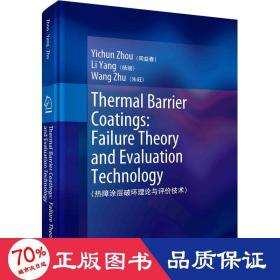 5
5
全新
北京市丰台区
平均发货28小时
成功完成率85.93%
-
全新
江苏省无锡市
平均发货15小时
成功完成率95.62%
-
全新
北京市通州区
平均发货9小时
成功完成率90.02%
-
全新
广东省广州市
平均发货17小时
成功完成率94.52%
-
全新
北京市顺义区
平均发货11小时
成功完成率93.92%
-
全新
北京市海淀区
平均发货9小时
成功完成率97.67%
-
全新
北京市通州区
平均发货9小时
成功完成率93.35%
-
全新
广东省广州市
平均发货17小时
成功完成率95.01%
-
全新
河北省保定市
平均发货26小时
成功完成率90.06%
-
全新
北京市海淀区
平均发货15小时
成功完成率87.83%
-
全新
广东省广州市
平均发货10小时
成功完成率94.77%
-
全新
山东省泰安市
平均发货7小时
成功完成率76.47%
-
热障涂层破坏理论与评价技术
重要提醒:::重要提醒::所有图书保证正版,按书名发货图片仅供参考, 有疑问请咨询客服,看清书名按书名发货
全新
北京市通州区
平均发货10小时
成功完成率91.87%
-
全新
北京市通州区
平均发货10小时
成功完成率77.78%
-
全新
-
全新
北京市海淀区
平均发货8小时
成功完成率94.26%
-
全新
北京市朝阳区
平均发货16小时
成功完成率77.8%
-
全新
江苏省南京市
平均发货14小时
成功完成率82.34%
-
全新
江苏省南京市
平均发货9小时
成功完成率35.14%
-
全新
江苏省无锡市
平均发货8小时
成功完成率96.18%
-
 2
2
全新
河北省保定市
平均发货15小时
成功完成率92.51%
-
全新
北京市西城区
平均发货11小时
成功完成率93.78%
-
全新
江苏省无锡市
平均发货10小时
成功完成率96.76%
-
全新
北京市朝阳区
平均发货12小时
成功完成率83.21%
-
全新
广东省广州市
平均发货7小时
成功完成率89.52%
-
 6
6
六五品
河北省廊坊市
平均发货10小时
成功完成率94.66%
-
全新
北京市通州区
平均发货37小时
成功完成率87.65%
-
全新
北京市朝阳区
平均发货11小时
成功完成率92.72%
-
全新
北京市通州区
平均发货33小时
成功完成率85.06%
-
热障涂层破坏理论与评价技术(英文版)
按需印刷 商品标题推荐语带有“按需印刷”字样的商品,全新正版出版社直发。为先下单后生产的绝版书订制服务,生产周期一般为1-3个工作日,按需印刷的 非质量问题,不支持退货的哦,如急用请谨慎下单。按需印刷的书籍均为平装书籍哦,请知悉/:^_^
全新
北京市通州区
平均发货25小时
成功完成率89.12%
-
全新
北京市通州区
平均发货32小时
成功完成率84.93%
-
全新
山东省泰安市
平均发货6小时
成功完成率84.09%
-
全新
北京市东城区
平均发货11小时
成功完成率84.11%
-
全新
广东省广州市
平均发货9小时
成功完成率88.49%
-
全新
山东省泰安市
平均发货8小时
成功完成率92.38%
-
全新
北京市通州区
平均发货25小时
成功完成率90.24%
-
全新
北京市通州区
平均发货19小时
成功完成率80.77%
-
全新
重庆市綦江区
平均发货16小时
成功完成率80.66%
-
全新
河北省廊坊市
平均发货10小时
成功完成率80.65%

 占位居中
占位居中


